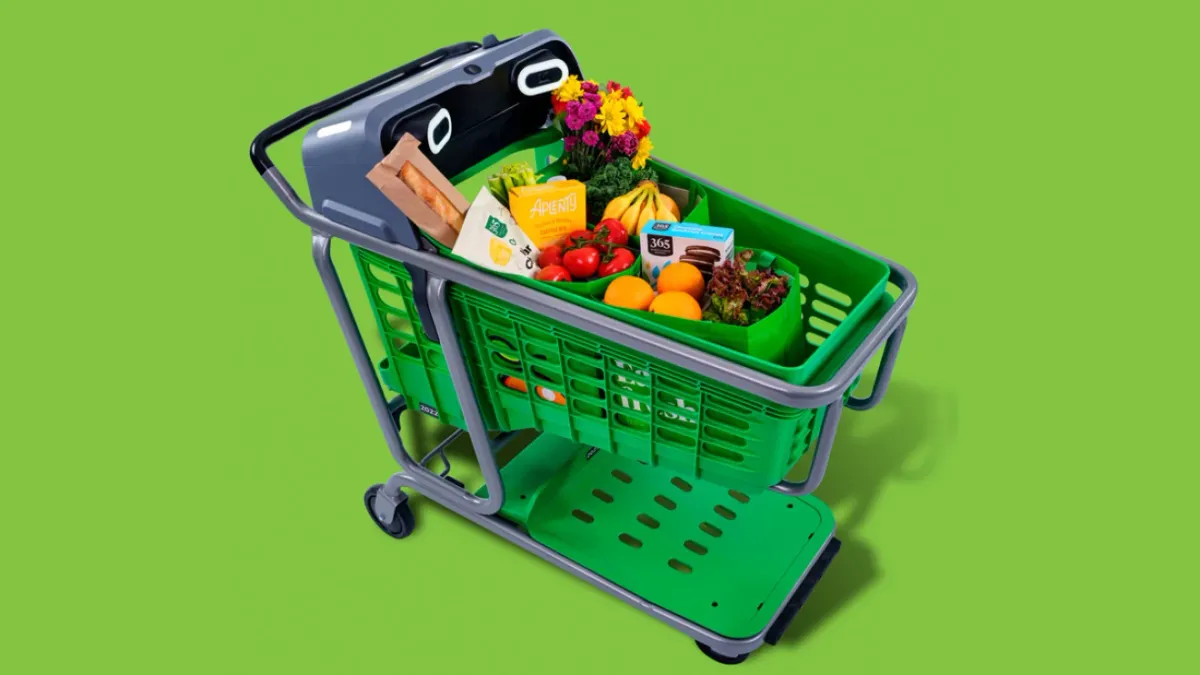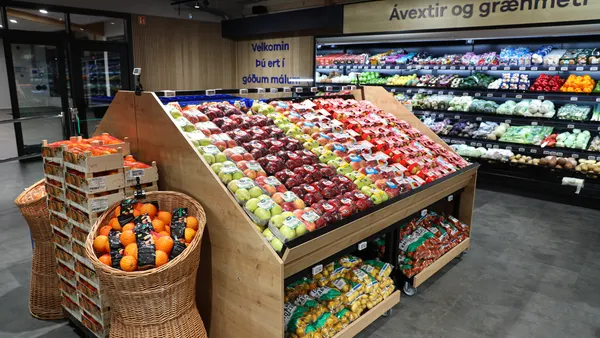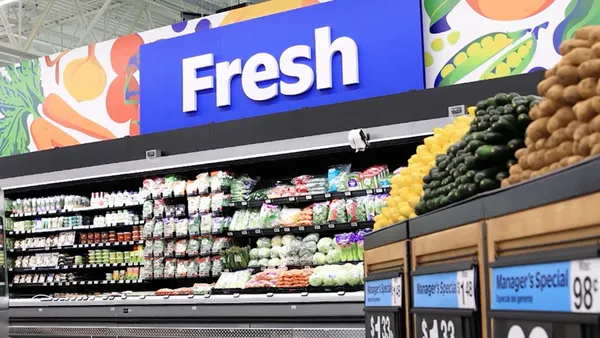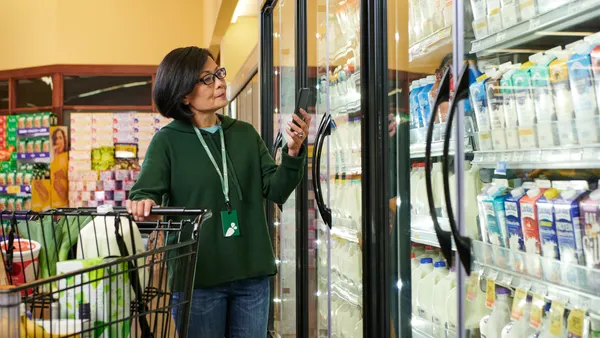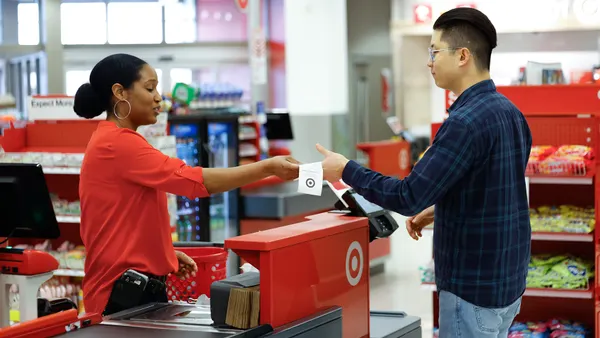Dive Brief:
- Amazon will roll out updated Dash Carts at several Whole Foods Market stores in the coming months, according to a company blog post Monday, continuing the infusion of checkout technology into the specialty grocery store.
- The new carts hold four bags of groceries — double the capacity of the previous version. They can also roll out to shoppers’ cars and feature an extended battery life.
- Despite its recent focus on Just Walk Out frictionless technology at Amazon Fresh and Whole Foods stores, this latest announcement indicates Amazon is still bullish on the prospects of its proprietary smart cart.
Dive Insight:
In his blog post, Dilip Kumar, Amazon’s vice president of physical retail and technology, said the company will add its revamped Dash Cart to a Whole Foods in Westford, Massachusetts, sometime in the next few months before rolling it out to “a few” additional Whole Foods stores and “many” Amazon Fresh stores.
The smart carts, which debuted in 2020 at the first Amazon Fresh store in Woodland Hills, California, automatically recognize products as shoppers place them inside and feature a running total of the items selected as they shop. The carts now appear in around half of the grocery chain’s 35 stores, while the rest of the locations offer Amazon’s Just Walk Out frictionless checkout technology.
By updating the Dash Cart, Amazon is bringing the technology more in line with a traditional shopping cart that shoppers are accustomed to. The latest Dash Cart weighs less than the previous version despite having double the carrying capacity. It features a shelf for delicate items and storage beneath the cart for bulky products. Kumar noted the carts more precisely track a customer’s journey through the store, and can show images of nearby items on the digital screen.
Whereas the previous version of the Dash Cart isn’t permitted to enter store parking lots, the latest version allows shoppers to take it to their cars to unload. Kumar said the new carts are “weather resistant,” with the technology having been tested inside ovens and freezers, and heavy weights dropped inside the cart more than 100,000 times.
To use the latest Dash Cart, shoppers scan in with a QR code through the Amazon or Whole Foods Market app, then scan items using one of the cameras located near the cart’s handle. The cart’s computer vision algorithms and sensor fusion technology help recognize each item as it’s scanned in or removed from the cart. Once finished, shoppers exit through the Dash Cart lane and their card on file is automatically charged.
Grocers have been carefully testing smart carts as they look for ways to merge digital and physical shopping. The carts are expensive, and their effectiveness at scale has yet to be proven, but they promise a faster checkout experience for shoppers and, perhaps most importantly, can help retailers track their journey through stores while also serving up advertisements to them.
Last year, Instacart bought smart cart maker Caper AI. Kroger has also been trialing smart carts, while Albertsons recently said it’s expanding a test of tech-enhanced carts made by Veeve to a few dozen stores



